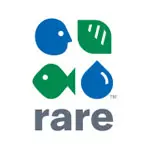Repairing social harm in communities through confronting its root causes
Founded by the drive to heal communities, Raphah Institute is a non-profit that repairs social harm in communities through confronting its root causes. The non-profit achieves this mission in many ways, and partners with judges, police officers, and others to take on 30-40 criminal justice cases a year. In these cases, Raphah Institute assists in building conversations between youth who committed a crime and those the crime impacted.
As the non-profit grew and took on more cases, they transitioned the strategic plan that lived in their head to software. Together, with ClearPoint, Raphah Institute improved their process for reporting to their Board of Directors. The increased transparency into how the non-profit is performing has allowed them to attract additional donors, take on more projects, and focus on meeting their mission.
The Launch of Raphah Institute
Operating as a small, 5-employee team, much of Raphah Institute's original strategic plan lived within their Chief Executive Officer (CEO), Travis Claybrooks' head. As a new team trying to get their feet off the ground, they didn't have time to embark on the journey of strategic planning. They were constantly reacting to what was happening around them. Of the measures they were tracking, a majority were cumbersome and difficult to report on during their monthly meeting with the board of directors.
Travis's meetings with the board of directors often included updates on the projects they were juggling in the moment. For each meeting, Travis created a report containing updates on their main goals and bullet point updates on their projects. Conversations centered around what was happening now, instead of their goals for the future, as they were still navigating taking off as a non-profit.
Soaring into Strategy
As their non-profit grew in size, Ron Galpreth, senior executive, encouraged Travis to step back and determine what success looked like for Raphah Institute. This was the start of their strategic planning journey.
Looking to grow their capacity and continue to impact communities, Travis began using ClearPoint to bring Raphah Institute's strategy to life. He had an ambitious goal of creating a new report for his board of directors, whose next meeting was a week after getting started with the tool. This new report had graphs and illustrations highlighting where they were, greater goals they wanted to meet, and KPIs showcasing how they would meet those goals.

Showcasing their success
Raphah Institute's first meeting with a ClearPoint report was a huge success. The board was beyond impressed. Travis improved transparency by providing a packet of ClearPoint reports filled with easier to digest information for the board to walk away with. While they weren't formally tracking measures in the beginning, Travis' research allowed him to bring to the board Key Performance Indicators (KPIs) the non-profit was looking to meet. This turned their original word document report into a digestible report with beautiful graphs and easy to understand information.

Using these data points for funding and grants, Raphah Institute can now better articulate to both external and internal partners that what they're doing is effective in healing communities. Internally, the staff at Raphah Institute have a clear and concise picture of the non-profit. This helps engage the team and excite them at the prospect of new program development.


A small but mighty team, Raphah Institute can now dream big thanks to working with ClearPoint. The intuitive platform, highly responsive ClearPoint team, and easy-to-make reports within have helped Raphah Institute not get bogged down building and tracking their strategic plan. Instead, they can focus their efforts on healing communities and transforming the justice system.
Additional Case Studies

ELDOR Automotive Powertrain


Velosio
.webp)

Rare


.svg)
